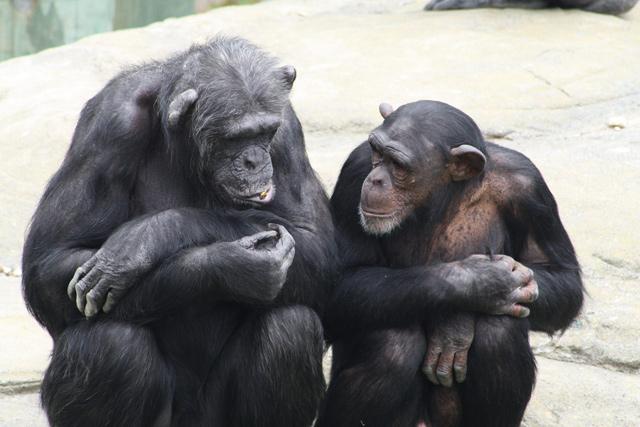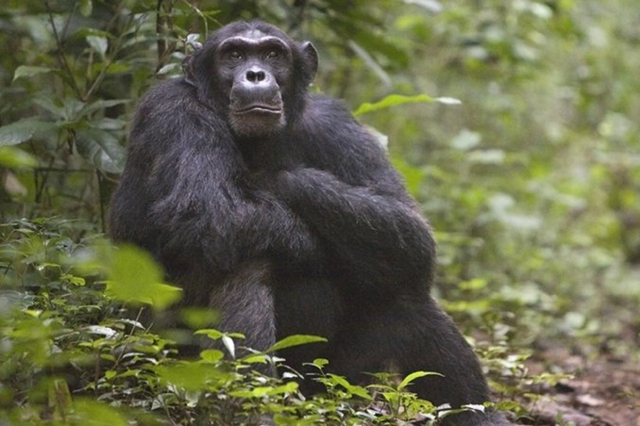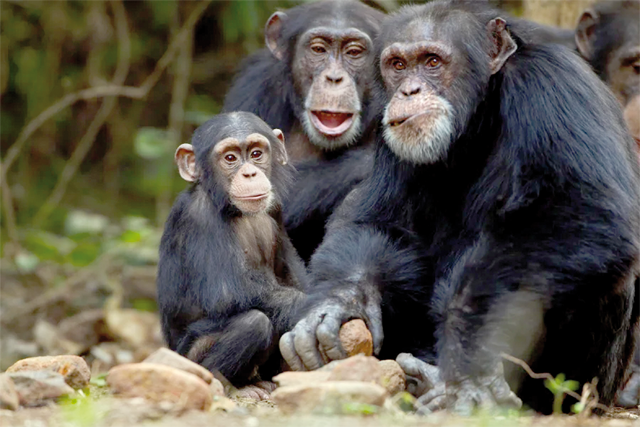You are here
Chimps learn ‘handshakes’ according to social group — study
By AFP - Jul 07,2021 - Last updated at Jul 07,2021
By Patrick Galey
Agence France-Presse
PARIS — Chimpanzees develop specific handshake-like gestures depending on their social group, according to the results of a 12-year observational study published recently that sheds light on the animals’ complex social structures.
Chimps are often referred to as being the most “humanlike” non-human species, given their propensity to perform complicated tasks, such as tool use, which were long thought to be the sole preserve of mankind.
Edwin van Leeuwen, an expert in animal behaviour at the University of Antwerp and the city’s Royal Zoological Society, studied dozens of chimpanzees sheltered at Zambia’s Chimfunshi Wildlife Orphanage Trust over a 12-year span.
Despite a large turnover in the chimp population due to deaths and births, Van Leeuwen was able to observe specific and repeated hand gestures among chimps in two distinct groups.
The gesture, known as the grooming handclasp, involves “each of the participants simultaneously [extending] an arm overhead and the other [clasping] the other’s wrist or hand or both clasping each other’s hand”, according to the results of his study, published in the journal Royal Society Biology Letters.
Through years of observation, Van Leeuwen found that palm-to-palm grasping was “substantially more pronounced” in one group, or society, of chimps than the other.
He also found that female chimps were far more likely than males to grasp palms, while males were more likely to grasp wrists, likely due to males’ desires to assert or affirm dominance.
“The fact that they have developed different styles in different groups reflects that they learn the style socially within their groups,” Van Leeuwen told AFP.
He said the chimps appeared to have learned to perform the grasps “to some extent” as a ritual, reminiscent of secret handshakes performed by humans.
“The handclasp fits into the whole social interaction that two individuals engage in sometimes, making it a special connection within an already intimate grooming bout.”
Van Leeuwen said his study was evidence of chimps’ ability to preserve “the stability of traditions”, a behaviour that among humans is thought of as cultural persistence.
He said the behaviour could not be explained by genetic or environmental factors since the composition of the two separate chimp groups was essentially identical — yet they each developed distinct grasping techniques.
He said the specific gestures and their longevity within each group could be a result of “the shared trait of social learning”.
Related Articles
WASHINGTON — When it comes to friendships, people are known to become more selective with age.It turns out the same is true of male ch
PARIS — The drummers puff out their chests, let out a guttural yell, then step up to their kits and furiously pound out their signatur
PARIS — Bumblebees and chimpanzees can learn skills from their peers so complicated that they could never have mastered them on their own, a

















